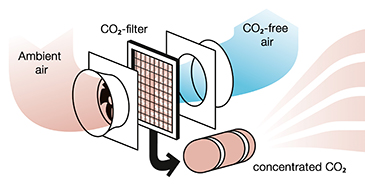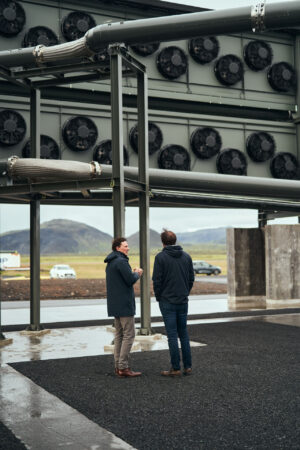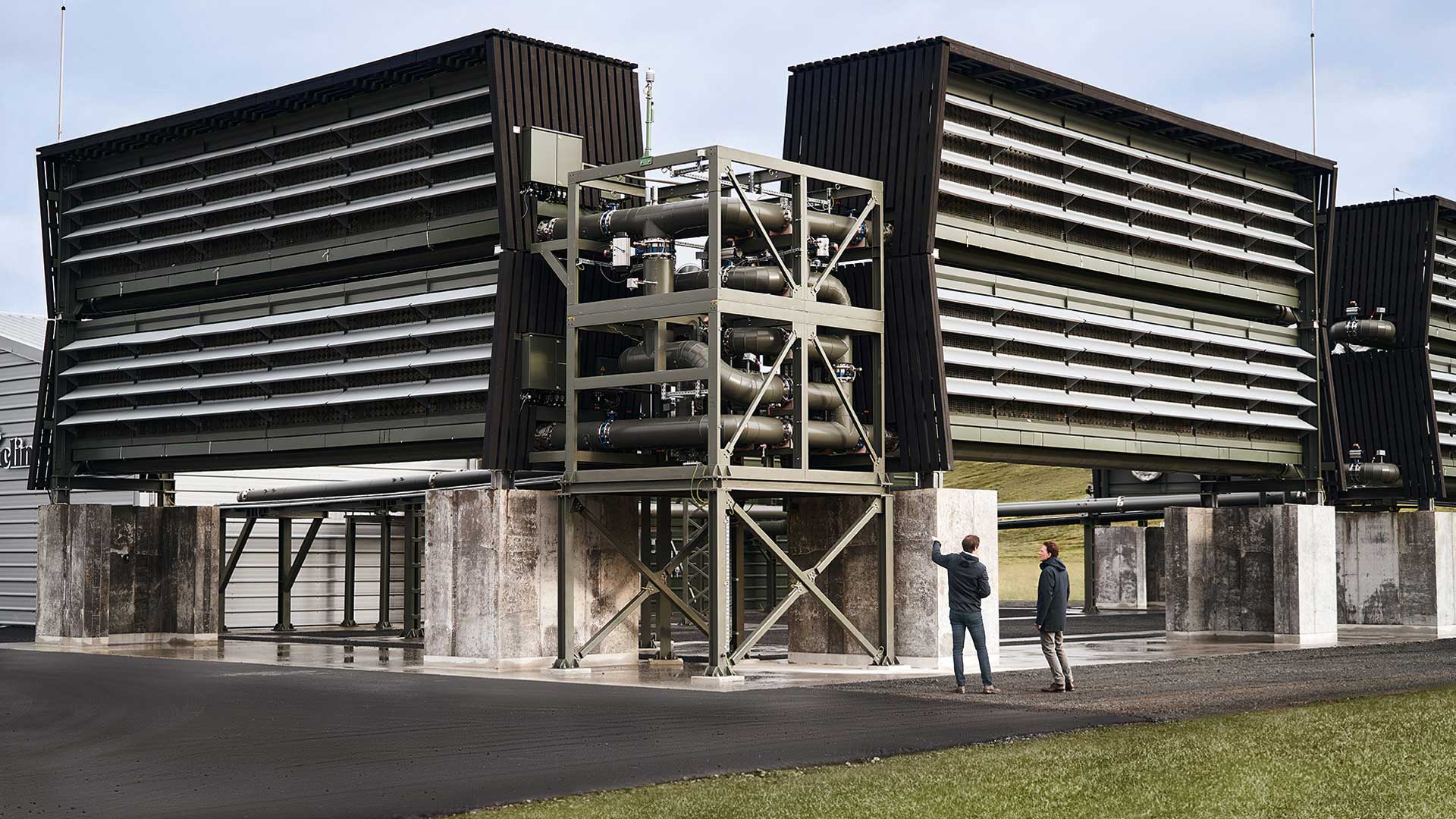The Orcas slide elegantly through the seas, always looking for prey. No sooner have they found their victim than they have struck them powerfully. But what do killer whales, also called orcas, have to do with improving air? In Island, “orca” stands for power, strength and energy. All of this also applies to the latest CO2 suction unit from the Swiss company Climeworks in Iceland. With 4,000 tons of filtered carbon dioxide per year, “Orca” is currently the most powerful system for direct air capture (DAC) worldwide.
 In direct air capture technology, fans draw ambient air through a filter to which catches the CO2. As soon as the filter is full, the greenhouse gas is removed from the filter material at 100 degrees Celsius.
In direct air capture technology, fans draw ambient air through a filter to which catches the CO2. As soon as the filter is full, the greenhouse gas is removed from the filter material at 100 degrees Celsius.
In addition, the system is supplied directly with heat energy from the ground by the geothermal power plant from Hellisheiði. “We have a climate-friendly energy source on site,” explains Nathalie Casas, Head of R&D at Climeworks. “This enables us to supply the fans with clean power and use the geothermal heat directly to release the CO2 from the filter material.”
Adapted to rugged nature
Thanks to geothermal energy, Iceland is an ideal location for the Orca, were it not for the changeable weather and the sulfurous air on the volcanic island. This is why Climeworks relies on particularly weather-resistant components, robust axial fans from ebm-papst and Amin filter material in its system. “This material binds CO2 very well, especially in cold and humid weather,” explains Casas. In addition, the company has not only adapted its system to the difficult environmental conditions from a technology perspective. Orca also fits into Iceland’s rugged landscape with its earth-colored facade.

With its facade, the “Orca” DAC system fits into the Icelandic landscape. ©2022, Climeworks
In addition to its wood optics, the CO2 intake also impresses with its performance. After all, twelve axial fans each work in eight containers in the Orca. Climeworks reduced the amount of steel installed in the container and increased the filter surface. As a result, Orca can absorb more carbon dioxide in the same time as its predecessor “Capricorn” in Hinwil, Switzerland – around 500 tons per container per year. In addition, a container is no longer made up of many individual filter modules with unused spaces but is now a module in itself.
From the air to the ground

More fans and more filter material make Orca the most efficient CO2 suction unit in the world. ©2022, Climeworks
But what actually happens with the filtered carbon dioxide? It is pressed back into the floor and stored there. To do this, Climeworks uses the geothermal circuit of Hellisheiði’s power plant, which conveys hot deep water from the ground to generate electricity and heat and then feeds the water back into the ground. In the final step, Climeworks feeds the CO2 filtered by Orca into the water. As a result, it gets around 800 to 2,000 meters deep into the ground, where it crystallizes under the high pressure and is deposited.
Therefore, Orca completely devours CO2. But when it comes to Climeworks, the system is just another step among many in the fight against climate change, because filtering just one percent of global CO2 emissions per year would require 87,000 more DAC systems like Orca. That is why, the whale will soon not be the only one hunting CO2. Climeworks is already planning the next systems. One of them is set to go into operation at the end of 2023, also in Iceland, and will be ten times as large as Orca. Further systems are set to follow by 2028, which may even be a hundred times larger.

Leave a comment